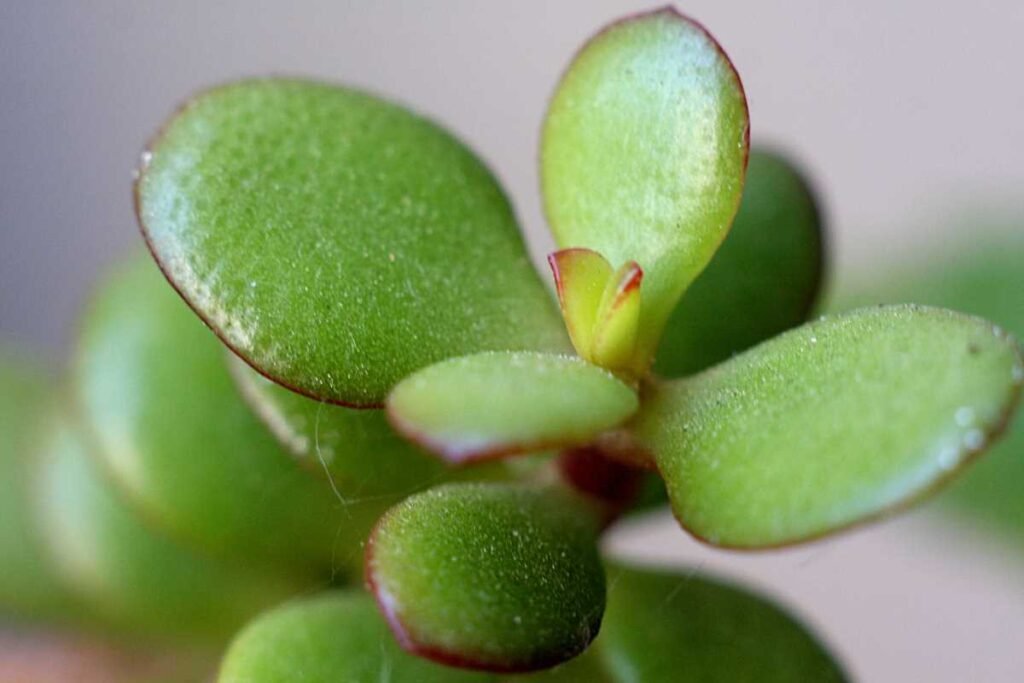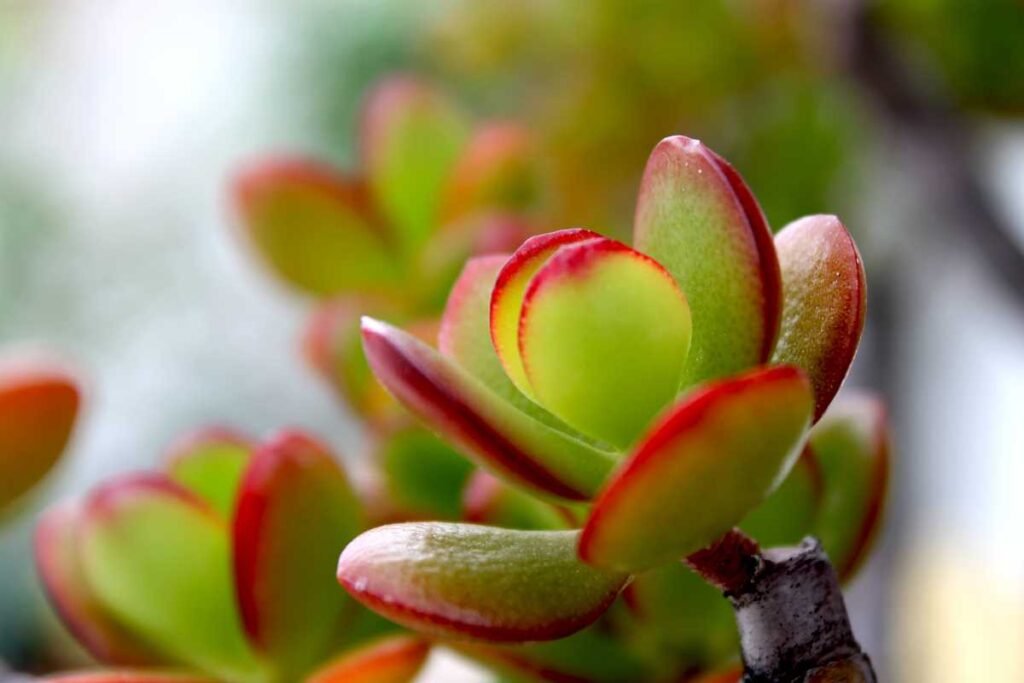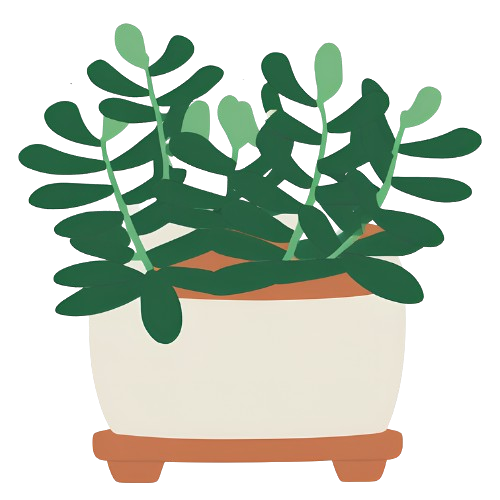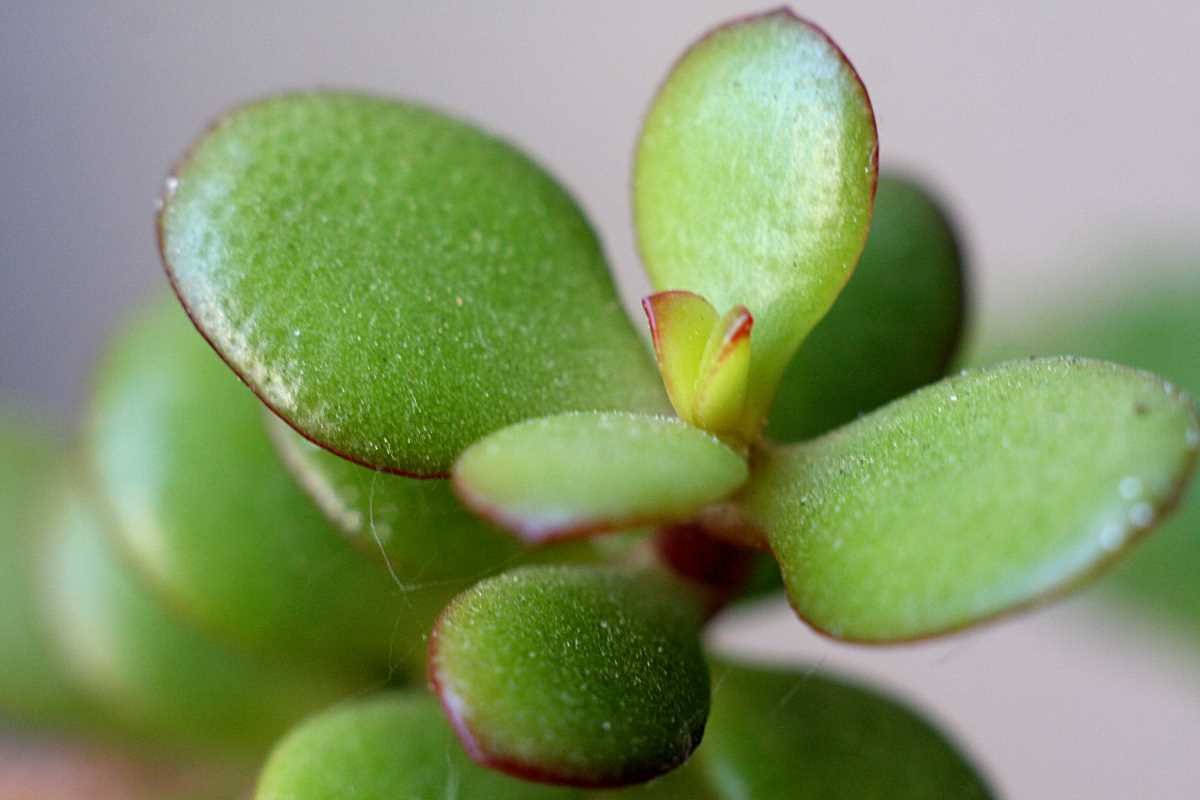Cats and plants often share our living spaces. But not all greenery is safe for our curious feline friends. Jade plants are pretty and easy to grow. Many people have them in their homes. But are these plants safe for cats?
Let me tell you right away: Jade plants are toxic to cats. But don’t worry! In this article, I’ll explain everything you need to know to keep your cat safe.
Table of Contents
What Is a Jade Plant?
Jade plants (Crassula ovata) are succulents. They have thick, shiny, oval-shaped leaves. These leaves grow on woody stems. The plants look like tiny trees. This is why people sometimes call them “money trees” or “lucky plants.”
Jade plants come from South Africa. They can live for many years. Some grow very large. Many people keep them as houseplants. They are easy to care for. They need little water. This makes them popular with busy plant lovers.
Are Jade Plants Toxic to Cats?

Yes, jade plants are toxic to cats. The American Society for the Prevention of Cruelty to Animals (ASPCA) lists jade plants as poisonous to cats. They are also toxic to dogs and horses.
The problem is in the plant’s sap. Jade plants have compounds that can harm cats. These compounds include:
- Unknown toxins that can upset a cat’s stomach
- Possible alkaloids that affect the nervous system
We don’t know all the toxic compounds in jade plants yet. But we do know they can make cats sick.
How Do Cats Get Poisoned by Jade Plants?
Cats are curious by nature. They like to explore their world with their mouths. A cat might chew on a jade plant’s leaves. Or it might play with a broken stem. When cats do this, they can swallow some of the plant’s toxic sap.
Even a small amount can cause problems. The more a cat eats, the worse the symptoms will be.
Cats might be drawn to jade plants for these reasons:
- The movement of the leaves when air flows by
- The shiny surface of the leaves
- Just plain curiosity
- Boredom
Some cats love to chew on plants. Others never touch them. You may not know if your cat will try to eat a jade plant until it’s too late.
What Are the Symptoms of Jade Plant Poisoning in Cats?
If your cat eats part of a jade plant, it might show these signs:
- Vomiting
- Diarrhea
- Drooling more than normal
- Seeming tired or weak
- Not wanting to eat
- Acting depressed
- Moving slowly or seeming uncoordinated
- Having a slow heart rate
These symptoms can start soon after your cat eats the plant. They might be mild if your cat only ate a little bit. But they can be severe if your cat ate a lot.
Some cats show symptoms right away. Others might not show signs for hours. It depends on how much they ate and how sensitive they are.
What Should You Do If Your Cat Eats a Jade Plant?
If you think your cat ate a jade plant, don’t wait. Act fast. Here’s what to do:
- Take the plant away from your cat.
- Check if your cat is breathing well and seems alert.
- Call your vet right away.
- If you can’t reach your vet, call the ASPCA Animal Poison Control Center at (888) 426-4435. They can help 24 hours a day.
Don’t try to make your cat throw up. Don’t give your cat any medicine without talking to a vet first. These actions might do more harm than good.
Your vet will ask questions about what happened. Try to tell them:
- When you think your cat ate the plant
- How much you think your cat ate
- What symptoms your cat is showing
- Your cat’s age, weight, and health history
This information helps your vet treat your cat.
How Do Vets Treat Jade Plant Poisoning?
Treatment depends on how sick your cat is. If your cat ate the plant recently, the vet might:
- Make your cat vomit to get rid of the plant material
- Give your cat activated charcoal to absorb the toxins
- Put your cat on a drip (IV fluids) to prevent dehydration
- Give medicine to protect the stomach and stop vomiting
- Keep your cat for monitoring
Mild cases often get better with simple treatment. Your cat might be back to normal in a day or two. Severe cases need more care. But most cats recover fully with proper treatment.
Are All Parts of the Jade Plant Toxic?

Yes, all parts of the jade plant are toxic to cats. This includes:
- Leaves
- Stems
- Roots
- Flowers
The sap inside all these parts contains the toxic compounds. Even if a leaf falls off the plant, it’s still dangerous if your cat eats it.
The toxicity level doesn’t change with the seasons. A jade plant is harmful to cats all year round.
How Can You Keep Your Cat Safe From Jade Plants?
The best way to keep your cat safe is to not have jade plants in your home. But if you love these plants, here are some tips:
1. Keep Jade Plants Out of Reach
Put your jade plants where your cat can’t get to them. Good spots include:
- High shelves your cat can’t jump to
- Hanging baskets (make sure the plant parts don’t dangle down)
- Rooms your cat doesn’t enter
- Behind closed doors
Remember that cats are great climbers and jumpers. A shelf that seems high might not be high enough!
2. Use Plant Deterrents
You can try products that keep cats away from plants:
- Bitter apple spray on the area around the plant (not on the plant itself)
- Commercial cat repellents made for indoor use
- Aluminum foil around the plant base (many cats don’t like the feel or sound)
- Double-sided tape near the plant (cats don’t like sticky surfaces)
Test these methods to see what works for your cat.
3. Provide Cat-Safe Alternatives
Cats often chew plants because they crave greens. Give your cat safe options:
- Cat grass (often sold as kits)
- Catnip plants
- Cat thyme
- Valerian
- Spider plants (not toxic, though they can cause mild stomach upset in large amounts)
These plants let your cat satisfy its plant-chewing urges safely.
4. Enrich Your Cat’s Environment
Bored cats are more likely to get into trouble. Give your cat plenty to do:
- Interactive toys
- Scratching posts
- Window perches for watching birds
- Regular play sessions with you
- Puzzle feeders
A busy, happy cat might show less interest in your plants.
5. Train Your Cat
Some cats can learn to leave plants alone. When you see your cat approach your jade plant:
- Make a sharp noise (clap or say “no” firmly)
- Use a spray bottle with plain water (some cats hate this)
- Gently move your cat away from the plant
- Reward your cat when it ignores the plant
Be consistent. Over time, many cats learn that plants are off-limits.
What Other Succulents Are Toxic to Cats?
Jade plants aren’t the only succulents that can harm cats. Other toxic succulents include:
- Aloe vera
- Euphorbia (includes pencil cactus, crown of thorns)
- Kalanchoe
- Mother-in-law’s tongue (snake plant)
If you have these plants, take the same precautions as with jade plants.
What Houseplants Are Safe for Cats?
If you want to replace your jade plant with something safer, try these cat-friendly options:
- Boston fern
- Areca palm
- Bamboo palm
- Friendship plant
- Money plant (not to be confused with jade plant)
- Polka dot plant
- Purple waffle plant
- Swedish ivy
- Some varieties of orchids
Always check if a plant is safe before bringing it home. The ASPCA website has a good list of toxic and non-toxic plants.
Common Questions About Jade Plants and Cats
How quickly will a cat show signs of jade plant poisoning?
Most cats show symptoms within a few hours of eating a jade plant. Some might show signs sooner if they ate a large amount.
Can a cat die from eating a jade plant?
Death from jade plant poisoning is rare. But it’s possible if a cat eats a lot of the plant and doesn’t get treatment. This is why quick action is so important.
Will my cat instinctively avoid toxic plants?
No, cats don’t always know which plants are harmful. They might chew on toxic plants out of curiosity or boredom.
My cat only licked a jade plant leaf. Should I be worried?
Even a small amount of jade plant can cause mild symptoms. Watch your cat closely for signs of illness. Call your vet if you notice any symptoms.
Can jade plant poisoning cause long-term health problems?
With prompt treatment, most cats recover fully from jade plant poisoning. Long-term problems are rare.
Are jade plants more toxic than other houseplants?
Jade plants are moderately toxic. Some houseplants (like lilies) are much more dangerous to cats. Others are less toxic. But any toxic plant can cause problems.
If I keep my jade plant in another room, is my cat safe?
Keeping the plant in a room your cat can’t enter helps reduce risk. But remember that leaves and stems can fall off. You might carry these parts to other areas without knowing it.
The Science Behind Plant Toxicity in Cats
Cats are more sensitive to some plant toxins than humans or dogs. This is partly because of their liver. A cat’s liver works differently than ours.
Cats lack certain enzymes that help break down toxins. This means that substances that don’t harm us can hurt cats. This is true for many plant compounds.
Also, cats are small. A dose that wouldn’t bother a human can overwhelm a cat’s system. This is why even a small amount of toxic plant can cause big problems.
Cats are also unique in how they explore. They use their mouths to learn about objects. And they groom themselves by licking their fur. If plant sap gets on their fur, they might swallow it while grooming.
Why Do Cats Eat Plants Anyway?
Scientists aren’t sure why cats eat plants. But they have some theories:
- Nutritional need: Wild cats eat the stomach contents of their prey. This includes partly digested plant matter. House cats might crave certain nutrients found in plants.
- Hairball help: Some people think cats eat plants to help cough up hairballs. The fiber in plants might help move hair through the digestive system.
- Taste or texture: Cats might simply like how certain plants taste or feel in their mouths.
- Boredom or stress: Just like people might snack when bored, cats might chew plants for something to do.
- Attention seeking: If you react strongly when your cat chews plants, it might learn that this behavior gets your attention.
Understanding why your cat shows interest in plants can help you address the root cause.
Creating a Cat-Safe Plant Environment
If you love both cats and plants, you can create a safe space for both. Here’s how:
1. Research Before You Buy
Always check if a plant is safe for cats before bringing it home. Use resources like:
- The ASPCA toxic plant database
- Your vet’s advice
- Books about pet-safe gardening
Make this research a habit whenever you consider a new plant.
2. Create a Plant Room
If you have space, dedicate one room to your plants. Keep this room closed off from your cat. This lets you enjoy toxic plants without risk to your cat.
3. Use Physical Barriers
Try these barriers to keep cats and plants separate:
- Glass terrariums for small plants
- Plant cages
- Clear plastic barriers around plant areas
These barriers let you see your plants while protecting your cat.
4. Try Vertical Gardening
Wall-mounted planters and high shelves can keep plants out of your cat’s reach. Just make sure your cat truly can’t jump or climb to these spots.
5. Watch for Fallen Plant Parts
Check often for fallen leaves or stems. These can land in areas your cat can reach. Clean them up right away.
6. Know the Signs of Plant Toxicity
Learn the symptoms of plant poisoning. Watch for these signs in your cat. Quick action can save your cat’s life if it does eat a toxic plant.
The Joy of Plants and Cats: Finding Balance
Having cats doesn’t mean you can’t enjoy plants. And having plants doesn’t put your cats at risk. With planning and care, you can have both.
The key is respect – respect for your cat’s safety and respect for your own joy in growing things. This might mean making some changes:
- Giving up some plants you love
- Creating special plant areas
- Being more vigilant about where your cat goes
- Spending time training your cat
These changes are worth it. They let you keep the best of both worlds – the calming presence of plants and the loving companionship of cats.
Final Thoughts: Keeping Your Cat Safe
Jade plants are toxic to cats. This is a fact we can’t change. But we can change how we respond to this fact.
We can choose to:
- Remove jade plants from our homes
- Keep them well away from our cats
- Watch our cats closely around plants
- Know what to do if poisoning occurs
Our cats trust us to keep them safe. They don’t know which plants can hurt them. It’s up to us to protect them.
If you love jade plants, you can still enjoy them. Just take extra steps to keep them and your cat separate. If that seems too hard, many beautiful, non-toxic plants can bring you the same joy without the risk.
Your cat’s health and happiness are worth the effort. And the peace of mind you’ll have is priceless.
Remember: When in doubt, keep the plant out. Your furry friend will thank you!

My name is Shahriar Robin, and I’m the creator of JadePlants.org. Growing up in a village, I developed a deep connection with nature from a young age. Plants and gardening have always been a part of my life, and jade plants, with their resilience and elegance, have held a special place in my heart. Over the years, I’ve learned so much about these fascinating plants, and I created this site to share that knowledge with you—completely free of charge.

